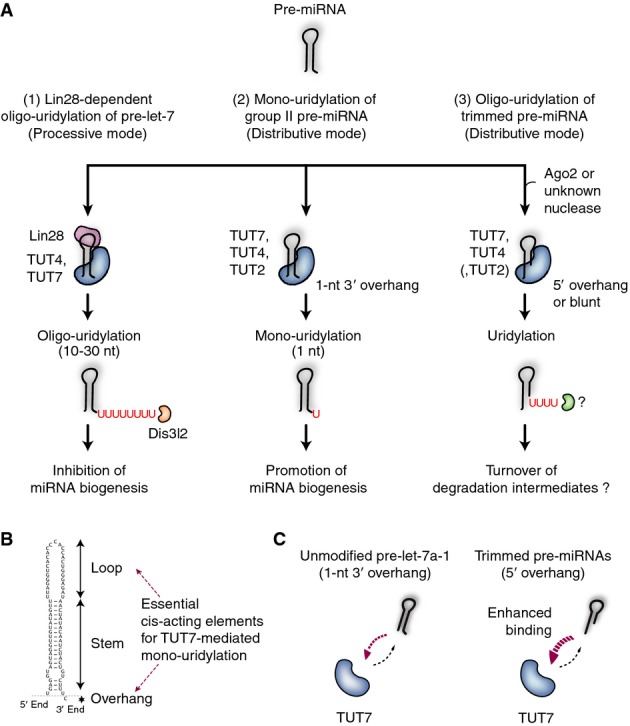Figure 5.

- Pre-miRNA uridylation by TUT7/4/2 in microRNA biogenesis pathway. (1) In embryonic cells and certain cancer cells, Lin28 recruits TUT4 (and TUT7, to a lesser extent) to pre-let-7 for oligo-uridylation. This reaction is processive. Oligo-uridylated pre-let-7 cannot be processed to mature miRNA and is instead degraded by Dis3l2. (2) Group II pre-miRNA with a 1-nt 3′ overhang is mono-uridylated by TUT7/4/2, which creates an optimal end structure for Dicer-mediated processing. TUT7 plays a major role in HeLa cells but TUT4/2 also contribute to mono-uridylation. The reaction is distributive, and the interaction between TUT and pre-let-7 is infrequent. (3) Trimmed pre-miRNAs are uridylated by TUT7 and TUT4, which promote their degradation. TUT2 seems to be less active than TUT7/4. As the interaction between enzyme and substrate is frequent, multiple cycles of distributive uridylation result in oligo-uridylation.
- Cis-acting elements of pre-let-7a-1 for mono-uridylation by TUT7. The overhang and the terminal loop are recognized by the C-terminal half of TUT7.
- Model of interaction between TUT7 and its RNA substrates. For 3′ trimmed pre-miRNAs, binding rate to TUT7 increased, resulting in enhanced uridylation activity.
